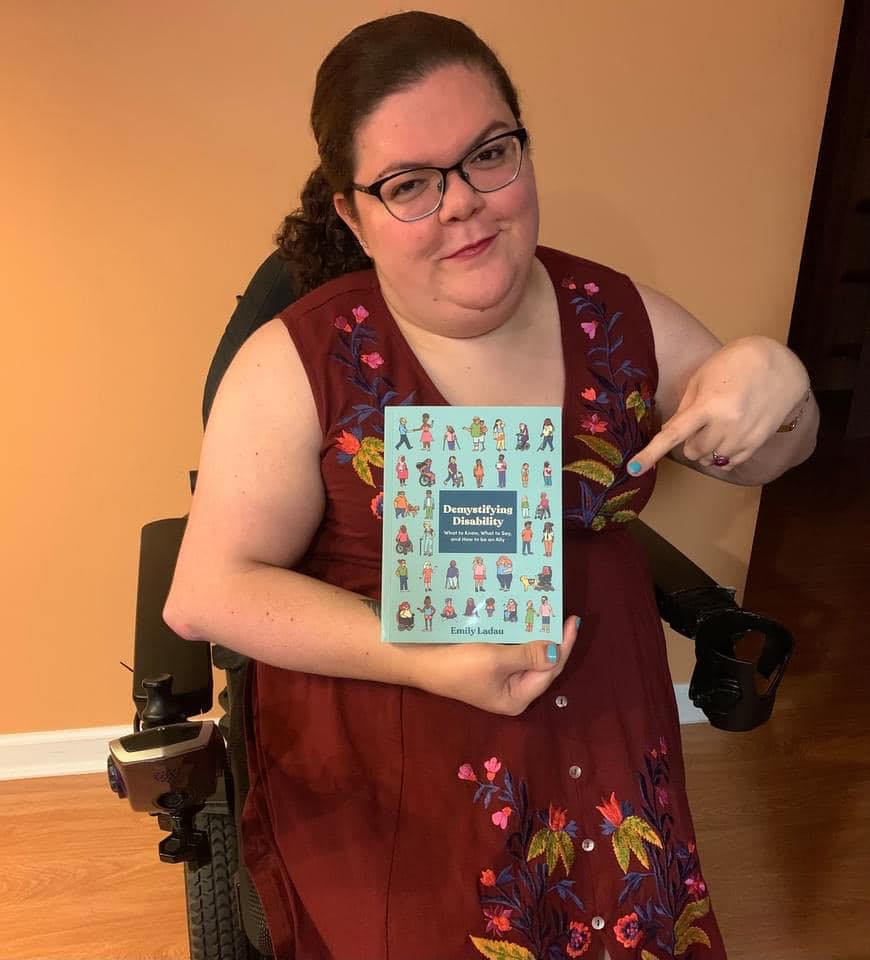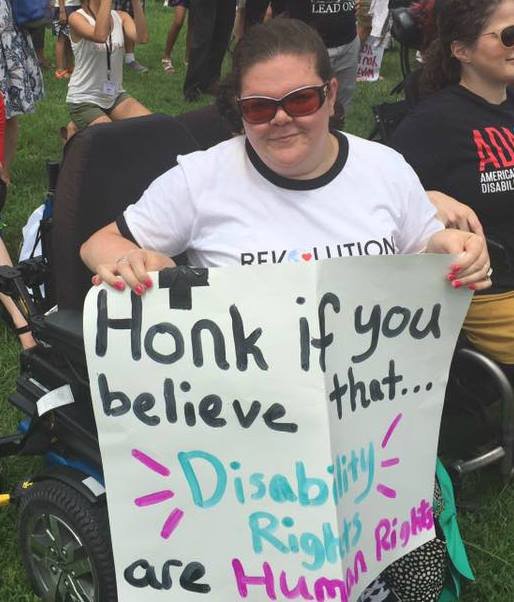Author Feature: Emily Ladau
Emily Ladau is a passionate disability rights activist, writer, storyteller, and digital communications consultant whose career began at the age of 10, when she appeared on several episodes of Sesame Street to educate children about her life with a physical disability.
Her writing has been published in outlets including The New York Times, CNN, Vice, and HuffPost and her first book, Demystifying Disability, was published by Ten Speed Press, an imprint of Penguin Random House, in September 2021. Emily has spoken before numerous audiences, from the U.S. Department of Education to the United Nations. Central to all of Emily’s work is harnessing the power of storytelling to engage people in learning about disability.
FEMINIST caught up with the author, Emily Ladau, to learn more about her book, Demystifying Disability… and her journey creating it in our interview below. ⬇️
Q: What is your personal mantra?
EL: The mantra I carry with me comes from the Talmud, a collection of ancient Jewish teachings: “You are not obligated to complete the work, but neither are you free to abandon it.” As a Jewish disabled woman, it’s a particularly powerful reminder to me to keep going even when working toward a more just world feels challenging or disheartening, because none of us are alone in the fight.
Q: What audience do you hope to reach? Why does your intended audience need to hear and understand your message?
EL: Disability isn’t a niche topic; it’s relevant to everyone. More than a billion people around the globe are disabled, which means that statistically speaking, you or someone you know experiences or will experience disability. So, my goal is to foster open conversations and to be as broad as possible in creating connections through my work.
Q: What do you hope readers walk away with?
EL: I’m one person, and though I try to be expansive, my work is written through the lens of my particular lived experience as someone who exists at the nexus of privilege and marginalization as a white disabled woman. Because of this, my greatest hope is that readers walk, roll, or otherwise move forward from reading my book by actively engaging with the work of disabled people across all identity groups.
Q: What was the most difficult part for you to write?
EL: Without a doubt, the history chapter of my book was the most difficult to write. I focused on U.S. history that happened within the past century or so. But my intent wasn’t to be exclusionary! All of human history is disability history, and if I’d tried to cover everything both geographically and in terms of recorded history, my book would’ve been more like the size of a few copies of War and Peace. I’ll leave the in-depth discussion and analysis to historians!
Q: To what extent does Demystifying Disability touch on disabled joy and pride?
EL: We’ve been socialized to think of disability as tragic, so to flip that script and center feelings of joy and pride is a radical act. Truthfully, there are plenty of days when being disabled doesn’t feel joyful because of the stigma and barriers that the world throws my way, but I also celebrate the history, culture, and community I belong to. So, I tried to weave threads of joy and pride throughout my book, while also addressing the more complex realities of disability.
Q: Why do you think it is crucial to create an accessible and easily digestible guide for all to understand and navigate disability issues?
EL: We live in a world where disability isn’t taught about in history classes, where disability representation in the media can be harmful and inauthentic (if it shows up at all), and where barriers to entry and access abound. So, disability remains unfamiliar. I’m a big believer that if we want the world to be accessible to disabled people, it’s important to make disability-related concepts, issues, and experiences accessible to the world. I recognize the implication here is that I’m placing the expectation on disabled people to do the labor of educating, but that’s not what I mean–especially when this labor falls to multi-marginalized disabled people. Instead, my hope is that we can meet people where they are and open the lines of communication to bring about better understanding and more acceptance of disability.
Q: What inspires you to continue educating others about the disabled community through an intersectional lens?
EL: I often joke that my dream is that the work I do will contribute to putting myself out of a job because we’ll have reached a world that’s truly inclusive and accessible. But I know that the work of educating and the process of learning are both journeys, not destinations.
Q: Which part of the book was the most eye-opening for you to write about?
EL: I tried to approach writing each part of the book with curiosity and a focus on filling in gaps in my own knowledge, but the biggest learnings have come since the book has been published–hearing thoughtful feedback and critiques. There is always more to learn about experiences beyond our own.
Q: What makes Demystifying Disability a unique resource guide to being a thoughtful and informed ally as opposed to other educational resources?
EL: I’m hopeful that when people read my book, they’ll feel welcomed no matter where they are in their learning. I aimed to create an approachable primer. But it’s not at all some kind of disability Bible or encyclopedia. It’s just my contribution to a conversation that’s so much bigger than me. I don’t want anyone to consider my book in isolation, because it’s far from the only resource on disability out there. And at the end of my book, I offer some suggested reading and resources to encourage people to keep going.
Q: How is demystifying disability interconnected with the intersectional feminist movement?
EL: Every issue is a disability issue, because every issue impacts disabled people. Disability cuts across every identity. That’s why it’s absolutely essential to take disability into account in order for feminism to be truly intersectional.
Q: What does being an intersectional feminist mean to you?
EL: Although I identify with feminism, I’ve often felt the feminist movement doesn’t always identify with me. Disability is so often relegated to the margins of marginalization, even within social justice movements. So, feminism can be complicated for me. That said, as a white woman who communicates verbally, I am often given the privilege of occupying certain feminist spaces as a sort of “token” disabled representative. This means it’s essential for me to use this privilege as I can to shift power and center stories other than my own. And I absolutely don’t always get this right. I’m a work in progress–as we all should be.
Discover Demystifying Disability: What to Know, What to Say, and How to be an Ally by Emily Ladau
→ Get your Copy at this link.
Be sure to tune into Emily’s social media for more information on her activism, book, and more. (Facebook, Instagram, and Twitter.)
For more books discover the FEMINIST READING LIST.





